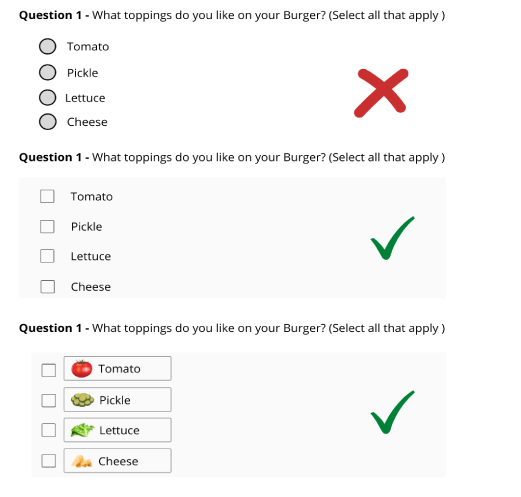By Sasha Haig
Everyone who writes questionnaires wants to be rewarded with high response rates and high completion rates. This is not always easy, particularly when a questionnaire is long or about a topic that many people would find boring. Fortunately, there are a few things you can do to boost your rates.
1) Write clearly and simply. Rather than building all-encompassing questions that detail every possible issue and interpretation, break the question down into its separate components. Put the basic question in one sentence. Put any necessary examples in a separate sentence. Put the instructions in a separate sentence. This will make the question clear, and help less skilled readers to fully comprehend all of the information.
Example: Using the following scale from strongly agree to strongly disagree, please indicate how much you agree or disagree that healthy food choices (e.g., food that is low in sugar and fat, food that isn’t deep fried, meals with plenty of fruit and vegetables) should be made available to children in public schools (please select one answer).
Solution: How much you agree or disagree that healthy food choices should be made available to children in public schools? For example, healthy food choices include food that is low in sugar and fat, food that isn’t deep fried, and meals with plenty of fruit and vegetables. (Please select one answer.)
2) Choose simple question types. Skilled researchers know that people do not like grids so if you must use them, keep them to an absolute minimum and keep them short. Include no more than 2 or 3 grids, and make sure each one has no more than 5 to 8 questions. If you must have more than that, try to convert some grids into individual questions – in other words, turn a 5 question grid into 5 separate questions.
3) Keep the questionnaire short. Resist the temptation to add questions that you know will not or can not be acted on. In other words, if you know the brand manager will never change the colour of the package, don’t ask about it. Or, if a new packaging technique would be too expensive to implement, don’t ask about it. Just because it would be ‘nice for you to know’ doesn’t mean it will be ‘nice for people to answer.’ Respondent experience must come first.
4) Include ‘opt-out’ answers wherever possible. Once you’re finished writing the questionnaire, check every question to determine whether it would be appropriate to add ‘Don’t know,’ ‘Don’t recall,’ ‘None of the above,’ ‘Other,’ or some other answer that will allow people to share their true opinion. We all know how annoying it is to want to share your real answer only to find there is no place to do so.
Example: When you buy soup, what type of package is it normally contained in? 1) can, 2) jar, 3) paper packet, 4) plastic or foil packet, 5) Styrofoam cup
Solution: When you buy soup, what type of package is it normally contained in? 1) can, 2) jar, 3) paper packet, 4) plastic or foil packet, 5) Styrofoam cup, 6) Other
5) And most importantly, lighten up! Don’t feel the need to perpetuate traditional questionnaire language just because it has been used for decades. Language and culture have evolved greatly over the last fifty years and our current questionnaires ought to reflect that. Use everyday language that is natural and comfortable.
Example: In which country do you reside?
Solution: Where do you live?
Feel free to ask me about any of these suggestions the next time you’re writing a questionnaire! Please get in touch with us!
Good luck!




